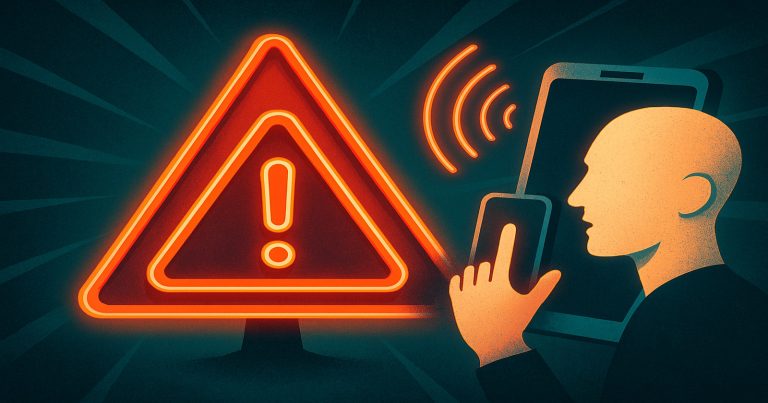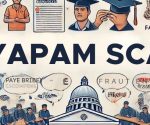The NTA Scam of 2024 has rocked the very foundation of the education system in India and unveiled widespread corruption and malpractices in some of the most eminent entrance examinations of the country. At the centre of the scandal is the NTA — the National Testing Agency — an autonomous organization that is entrusted with conducting high-stakes examinations like the NEET, JEE, and UGC NET. What was once a highly regarded institution is now facing serious allegations concerning the breach of paper secrecy, bribery, and manipulation of results against the National Testing Agency (NTA). The controversy began with the NEET paper leak in 2024, which saw near widespread confirmation of the illegal access of question papers and circulation before the examination. This brought forward an agitation nationwide among students, parents, and teachers. Following this, there were student protests and petitions across many High Courts and the Supreme Court for a complete re-examination and investigation being conducted by the Central Agencies. As it has now unfolded, the controversy has created grave concerns regarding the credibility of competitive examinations in India, the accountability of regulatory bodies, and the future of millions of aspirants.
What is NTA Scam?
The scam, which relates to a large NEET paper leak controversy, refers to all sorts of illegal practices and activities, imposition, and fraud in connection with any one or more of the entrance examinations conducted by the NTA (National Testing Agency). The exams conducted by NTA are of great significance since they decide the future of millions of students aspiring to get admission to any of the prestigious colleges or universities in India. Candidates or insiders have used leaked QC along with questions to gain unfair advantages before the launch of the exam.
Paper Leaks
One of the most damaging forms of exam fraud. In NEET 2024, JEE, and UGC NET, question papers were leaked well before the exam date. In the NTA Scam, someone leaked question papers for exams like JEE, NEET, and UGC NET to the public well before the exam date. The leaker then sold these papers to students, giving them a significant advantage over those who didn’t have access to these leaks.
Usually, through the insiders and the corrupt exam officials who accessed the exam papers much before the actual date of the exam. It was then disseminated through brokerages or middlemen to other students. Not only were exams compromised, but paper leaks crashed the faith in the NTA’s ability to conduct evenhanded and clear exam events.
Bribery and Corruption
Bribery indeed worked hand in hand with this NTA Scam. A middleman or an official would be paid by the student or student’s family to get admission into their dream colleges by sweetening the exam results or passing some insider information regarding the exam papers.
Middlemen and officials took money (from lakhs to crores) to leak tests or to manipulate results because it helped candidates secure seats in top colleges or alter exam results. This mode of corruption favoured the financially powerful rather than merit and ability and thus curtailed opportunities for deserving candidates.
Manipulation of Exam Results
Manipulation of exam results was another way in which the scam affected the educational system through NTA. Mostly by corrupt examination officials, this procedure would be carried out by altering a candidate’s marks or ranks against bribery. Unmeritoriously inflated ranks in NEET UG 2024 brought public wrath and protests by students. This manipulation of examination results affected the very essence of the results’ credibility and deepened the lack of trust in the NTA for conducting fair examinations.

Timeline of NEET 2024 Scam
| Date | Event |
| May 5, 2024 | NEET 2024 Exam Conducted |
| May 6–20, 2024 | Paper leak rumors spread in Bihar, UP |
| June 4, 2024 | NEET results declared early |
| June 5, 2024 | Grace marks scandal exposed |
| June 6–Present | Protests, petitions, court hearings begin |
Impact on Students and Mental Health
- Meritorious students feel cheated and demotivated
- Mental stress and depression have reportedly increased
- Students are calling this the death of meritocracy
- Social media hashtags like #NEETScam2024 trended for days
Causes of NTA Scam
The NTA Scam did not come just like that; it had several systemic problems infiltrating itself into the Indian education system. The prime reasons are:
Severe Pressure and Admission Demands
The overwhelming competition posed by exams like NEET and JEE stimulates students and their families to commit acts of bribery and cheating to secure admission. With such a limited number of seats and the prestigious IITs, AIIMS, and NITs to fill, students have to perform under such intense competitive conditions. This indeed creates pressure, and sometimes, candidates and families go to the extreme by using cheating or bribery.
More than a million students apply for some 5,000-6,000 seats. More than a few students feel that the only way for them to be or not to lose out is to utilize illegal activities to secure their places. This environment of undue high pressure has created a breeding ground for such unscrupulous elements to exploit vulnerable students for their financial gain.
Ineffective Vigilance and Monitoring
The fundamental basis of the scam of NEET 2024 was its exam security, which enabled unnoticed paper leaks and impersonations. Real-time monitoring systems were absent, which made tracing such malpractices difficult. The NTA conducted the exams for all the high-stakes tests; however, they didn’t have the infrastructural support or the resources to uphold total transparency by preventing malpractices.
Checks and balances were so inadequate that all these kinds of exam-related frauds, like paper leaks or impersonation, occurred without much difficulty. Fraud could continue for a long time unchecked due to the absence of strict surveillance systems.
Corruption in the NTA and Relevant Agencies
Some of the NTA officials have also been arrested for the criminal activities they indulged in, namely fraud and manipulation, revealing further evidence of already deep-rooted corruption in the agency. These insiders conspired with brokers to leak papers and tamper with results for financial gain. Examination officials and middlemen constitute some of the insiders who have actively participated in facilitating cheating, rigging results, and leaking papers.
Corrupt officials and middlemen have colluded in sidelining deserving candidates for the sake of financial resources and have given preference to them over others. This has done grave damage to the credibility of the exams and has also made possible fraudulence.
Legal Actions in the NTA Scam
CBI investigations into the NEET 2024 scam were initiated following FIRs filed in many states, including Bihar, Uttar Pradesh, Jharkhand, and Madhya Pradesh. The whole thing turned on paper leaks, conspiracy, and bribery. Much of the legal damage done with regard to the NTA Scam has occurred because of several government officials, middlemen, and some students engaging in these frauds. Of course, the scandal was nearly all over the media and fluttered in the public outcry after its initial detection, but judicial redress has taken a rather thorny pathway vis-à-vis the implicated individuals.
Criminal Investigations and FIRs
One of the immediate steps taken by the authorities was the registration of First Information Reports (FIRs) against the suspected offenders. Multiple FIRs were filed by different states, including Uttar Pradesh, Madhya Pradesh, and Delhi, in which a significant part of the illegal activities occurred.
These FIRs stated Billingsgate-type charges, including fraud, cheating, bribery, conspiracy, and far more serious indictments, like criminal breach of trust and misappropriation of public funds.
Central Bureau of Investigation (CBI) and state police took it up for investigation into the scam. With wide-scale corruption issues, especially among government officials, the CBI had been called to handle the case.
Arrests of Key Figures
The investigation into the NTA Scam has led to multiple arrests of individuals, including middlemen, bribery brokers, and examination officials. These arrests would be crucial in exploring the entire dimension of the scam. During the probe, numerous middlemen apprehended leaking NEET paper 2024 were arrested. These middlemen brokered between the students and corrupt NA officials.
Several middlemen and brokers acting as intermediaries between a candidate and corrupt officials have been arrested. These individuals played a major role in facilitating cheating, paper leaks, and impersonations at the exams.
Some NTA officials and employees were also arrested for leaking question papers or accepting bribes. These officials were charged with misusing the position of trust for private gain.
Judicial Actions & Court Hearings
There have also been judicial court hearings arising from the NTA Scam because legal proceedings have emerged against the accused. The judiciary has sought to engage in the delivery of justice actively.
The NEET scam court hearings included suo-motu actions by several High Courts after widely reported media attention. For many of the accused, bail applications were rejected in light of the serious nature of the offences. Legal experts emphasized that fast judicial action is necessary against the NTA officials involved in the scam to restore public faith in the examination process.
Some courts have put suo motu action, prompted by widespread media reports about the NTA Scam. The steps taken became necessary, particularly upon the realization that corruption had gotten itself seated deep inside the examination process. Most of those who were somehow connected with the scam, especially the influential, have found themselves denied bail, which is a clear indication of how serious the alleged crimes were.
The courts also demanded greater transparency in the mode of investigations themselves. They were concerned that there must be some evidence to support the charge that examinations were manipulated so that those responsible for corrupt practices would stand trials in a court of law.
Regulatory Changes and Approaches To Prevent Another Occurrence
The scam having been unearthed, the propelling of the issue now extends to the kind of regulations and schemes that can help avert this in the future. Such changes in regulations may be part of an overarching legal onslaught against the perpetrated scam.
One of the first recommendations after the blast of the scam was being called a point of better oversight for better transparency, involving proposals for biometric identification, real-time surveillance, and improving technology to thwart cheating and leaking papers.
Reformed laws on examination fraud and corruption in bribery have also been strongly agreed upon. This implies that tougher penalties will be set for anyone found guilty of tampering with the examination process.
Preventive Measures for Future Exams
- Biometric verification during exams
- Blockchain-based encrypted question paper delivery
- CCTV & AI-powered exam surveillance
- Stricter anti-cheating laws and punishments
NTA Scam 2024 FAQs
1. What is the NTA scam in NEET 2024?
The NTA scam refers to alleged paper leaks, bribery, and manipulation of results during NEET 2024, conducted by the National Testing Agency. It exposed deep flaws in India’s exam system, affecting the fairness and transparency of one of the most competitive entrance tests.
2. How did the NEET 2024 paper leak happen?
Insiders and corrupt officials reportedly leaked the NEET question paper before the exam. These papers were sold by middlemen to candidates, creating an unfair advantage and breaking the sanctity of the examination process.
3. Which exams were affected by the NTA scam?
The scam primarily impacted NEET UG 2024, but there have also been allegations around other NTA-conducted exams like JEE Main and UGC NET, raising concerns about the overall credibility of the NTA.
4. What actions have been taken against those involved in the scam?
Multiple FIRs were filed in states like Bihar and UP, and the CBI is investigating the NEET paper leak. Arrests have been made, and courts have denied bail to several accused, including NTA insiders and brokers.
5. How will this scam affect students and future NTA exams?
The scam has caused massive anxiety among aspirants and has led to demands for re-exams, reforms, and strict surveillance. Students fear losing seats due to manipulated ranks, and the credibility of the NTA is under serious scrutiny.


